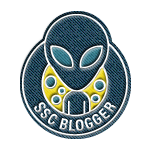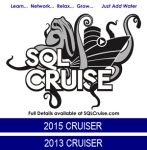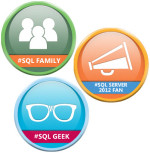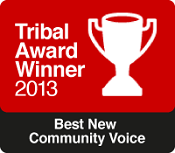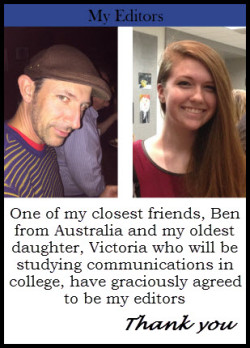 This has been another spectacular year in the SQL world. Unfortunately, I can’t find my list of goals, so I’ll have to wing it. I can say, that I have had some unexpected surprises this year.
This has been another spectacular year in the SQL world. Unfortunately, I can’t find my list of goals, so I’ll have to wing it. I can say, that I have had some unexpected surprises this year.
Level up!
- I have two favorite activities in the SQL world. One of which is speaking. This year I presented 14 times to over 1300 people. I spoke at two conferences, one of which was my second year at PASS Summit in Seattle. I spoke at 6 user groups, one of which was presented remotely in Australia. I also spoke at 5 SQL Saturday’s and once for Pragmatic Works.
- My second favorite activity is writing. This year, I started writing for SQL Server Central. I wrote two articles for them, which had more than 20K views. I have my third post scheduled for Jan 4th/5th, so keep your eyes open for it. I also had 17 blog posts on my website. My metrics for the year were off the wall. An 82 % increase in sessions, a 403 % increase in session duration, a 97 % increase in page views (that’s 23K page views!), and my favorite, 52% increase in Users, which yields 9.5K users. Thanks viewers!
- I created my meet and greet list for PASS Summit and I was able to meet most of the people on my list. Some of them I knew through conversing on Twitter, like Pinal Dave. I (finally) had an opportunity to give Buck Woody a big hug too. I also met some people that I didn’t know: Wawrick Rudd, Mellisa Lord, Michael Upton, Denis Horner, and many more.
- This is my second year co-leading our local BI user group with Rob Hatton.
- I had the honor of being part of the Friends of Red Gate program again. This is my third year.
- My husband granted me my wish for our 20th wedding anniversary of going on my second SQL Cruise in the Caribbean AND he went with me on it. When I mentioned I had been on a SQL Cruise in my interview for my current job, they thought I was kidding. If you have never heard of SQL Cruise, I highly recommend checking it out. There is no where else you can get 6 amazing instructors for 30 students. Those speakers are trapped on a ship with you, so you can actually spend time with them over drinks or dinner asking them any question you want. I had that opportunity with Jes Borland, Grant Fritchey, Kevin Kline, David Klee, Tim Ford, and Amy Ford.
I have some new goals for 2016 as well
- I was hoping to speak at least once a month again, but after looking at 2014 and 2015 it will be easy to speak an average of twice a month. I have a goal of of 9 SQL Saturdays. Hopefully, I will get another opportunity to speak at PASS Summit. And I plan on speaking over the inter-webs as many times as I can. Here are some of the speaking engagements, I already have planned.
- SQL Saturday 461 in Austin, TX, Janurary 30th, 2016.
- Pragmatic Works on Feburary 9th.
- Profession Development Virtual Chapter in March.
- SQL Saturday 497 in Huntington Beach, CA April 02, 2016.
- DBA Fundamentals Downunder Virtual Chapter in May.
- All the others will slowly appear on my Speaking Engagements page.
- I plan to continue writing for my own blog and for SQL Server Central with a goal of one post each month for each site. That is a lofty goal for me since almost all my writing is done on Sunday’s, in a little coffee shop with my daughter. (I also spend that time writing abstracts.) Wish me luck!
- I’ve enjoyed speaking on SSRS, but I’m going to change it up. I’ll continue speaking on writing better SQL, but I’m also going to take up another SQL subject. Stay tuned!
- I’ll continue co-leading our local BI user group.
- I plan on mentoring one of my colleagues, Ly Nguyen. He has a goal of becoming a DBA or a Database Developer. I’m super excited about this, since he is eager to learn.
- This next year, I want to spend more time on forums, helping others.
- Hopefully, I’ll be part of Friends of Red Gate for another year.
Stretch goals
I think it’s a good idea to have some stretch goals to help push yourself past your comfort zone. Here is mine.
- Create a full day session to present. This seems so overwhelming, but I was a Microsoft Trainer for two years at the beginning of my career, so I know it’s possible.
- Speak (physically) in another country. My Australian friends, have been pushing encouraging me to speak in Melbourn, AU. I’m not sure if it will be possible, since my oldest daughter will be attending college next year, and most of my speaking money will be redirected to her tuition. If I accomplish the first of my stretch goals, then this might be possible.
- Writing another book. This is a big commitment of time. The good news is, my family is willing to support me in this endeavor. This is great, since they would hardly see me, except at dinner, until the project was completed.
I want to thank…
There is no way I could accomplish what I do without the support of friends and family. Here is this year’s shout out.
- My husband is definitely number one on this list. Whenever I have a really bad week, or I get bummed out about something, his first question is, “When is your next SQL Saturday”? Also, he is encouraging me to speak and write until my heart’s content.
- I always say, my first language is SQL and my second language is English. Luckily I have my daughter Victoria to help with my grammar and spelling. She is now one of my official editors and will continue to be my editor through college.
- Ben McNamara is my second editor. While Victoria can catch my English mistakes, Ben can catch the technical ones. He is also one of my touchstones when I get nervous about speaking or am taking criticism personally.
- Jes Borland, Chris Yates, Julie Koesmarno, and Nghi Nguyen are my other touchstones in my life. They are great at keeping me grounded.
- Steve Jones asked me to write for SQL Server Central and I was very honored. He also has the most relaxed manner that I wish I had. I can learn how to be more laid back from him, since I see him at SQL Saturdays and at Summit.
- I want to thank you, my readers and those that attend my presentations. Without you, I wouldn’t be having any fun.
Now it’s your turn.
My question to you is, what are your technical goals for 2016? Do you have some achievable goals and some stretch goals? Here are some ideas.
- Start a blog. Most people start writing a blog for themselves, to remember how to do something in the future.
- Start speaking. This can be very scary, but there is always someone out there who needs to know what you know. It can be as simple as rewriting a cursor or as complex as setting up replications.
- Mentoring. Speaking might be too scary, so instead take someone under wing. Not only can you mentor them in a technical capacity, but you can also mentor them in how to deal with different parts of a team or how to gather requirements.
- Volunteering: Every organization that is run by volunteers, needs more volunteers. You can help out at your local SQL Saturday or at PASS Summit to name a couple of places. (I volunteered at Summit this year. I directed people to the WIT lunch or to the normal lunch. I had a blast!) You can also volunteer at local community centers that have programming classes for kids. We need to help encourage the next generation.


















 On Tuesday, July 7th, 2015, I had the privilege of speaking for the
On Tuesday, July 7th, 2015, I had the privilege of speaking for the 















 Blogging
Blogging

